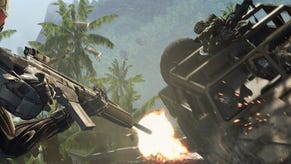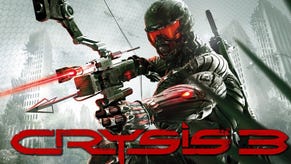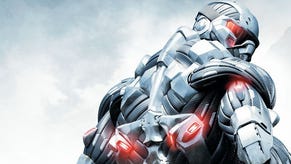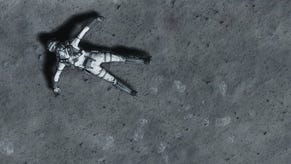Crysis
E3: Junglist massive.
So. To start off with, we could tell you the one about how Crysis is being developed by Crytek, and how it also developed Far Cry, and about the Ubisoft / EA switch, but you probably know all that already. Or we could start with the storyline, which is basically about fighting aliens in jungles and isn't likely to excite anyone who's played more than two videogames very much. So instead, let's start with what you really need to know about Crysis: it looks superb.
Specifically, it looks great running on Windows Vista with DirectX 10. It looks swish with DirectX 9 too, as it happens, but there's a reason Crytek is showing us two videos for comparison - the difference is clear. From the way shadows move through the jungle and light falls through the branches to the smoke and fire curling around a giant alien mech that comes looming out of the darkness, it's obvious that we're looking at a whole new level of detail and realism.
"It's the next generation in Windows gaming - visual fidelity, density and immersion," says Crytek CEO and founder Cevat Yerli. But he's also keen to emphasise that it's not all about looks; the new technology, he argues, actually enhances gameplay and most definitely isn't just there for the sake of it.
"We are focusing all technology on either immersion or gameplay. If it doesn't serve the purpose, it won't go in," he explains. So yes, you'll find plenty of soft shadows, depth of field, motion blur and fancy lighting effects here - but all with good reason.
"For example, if [the technology] is about breakable objects, it's supposed to bring new gameplay. If it's about real time shadows, I need to be able to use that to read enemy presence. If it's about clouds, I want to fight inside the clouds, with an enemy in the skies. All technology is for the purpose of being a vehicle for the gameplay," Yerli explains.
Trunk call
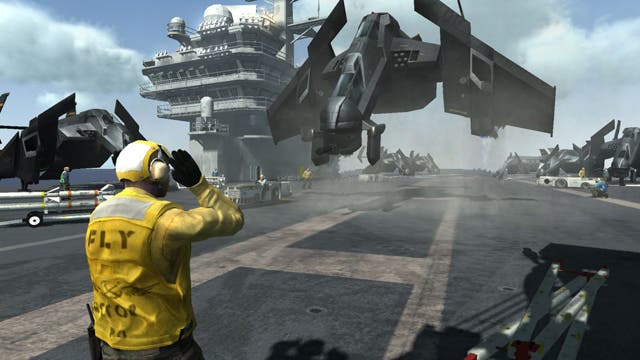
Let's take the game's "bendable, destructible foliage", say. Not the most exciting of concepts on paper, but when you've seen a player fire off a round at a tree trunk so that it breaks off and comes crashing down on the head of an unfortunate enemy across the other side of the jungle - all without having to break cover - things start to make sense.
Then there's the other type of technology showcased by the game, as in the fictional kind. (NB: Those who've played more than two videogames may wish to skip the next few paragraphs.) Crysis is set in 2019, and begins with a giant asteroid crashing out of the sky to land on an island in the Pacific. The North Korean Government creates a perimiter around the crash site, but the Americans aren't too happy about this, so they send in a Delta Force squadron to do a bit of recon.
It's not long before they end up in conflict with the North Koreans, battling it out for ownership of the asteroid. Only, as it turns out, it isn't an asteroid at all - it's a giant alien spaceship, standing a massive two kilometres high. The ship generates a huge shield which flash freezes the island, and messes up the world's weather system. As the North Koreans and the Americans realise that the invasion of Earth has begun, they also realise that they now have rather more in common than they thought, and team up to take on the enemy.
Which means, as a Delta Force operative, you're no longer fighting boring old humans, but giant mechanical alien beings with highly sophisticated weapons and a thundering war cry that makes the T-rex in Jurassic Park sound like, well, a much bigger and scarier T-rex, to be honest.
But unlike dinosaurs, these beings - known as hunters - have more tricks than scary noises and big teeth up their sleeves [cunning - Ed]. For starters, they're equipped with special sensors which allow them not only to locate their enemies through sight and sound, but to quickly establish which enemy poses the greatest threat. When it comes to attacking, they have plenty of options - they can attempt to pin you down with their huge metal claws, or pick you up and chuck you over a nearby cliff, or even freeze your body before shattering it into hundreds of tiny and presumably very cold pieces.
Suits you
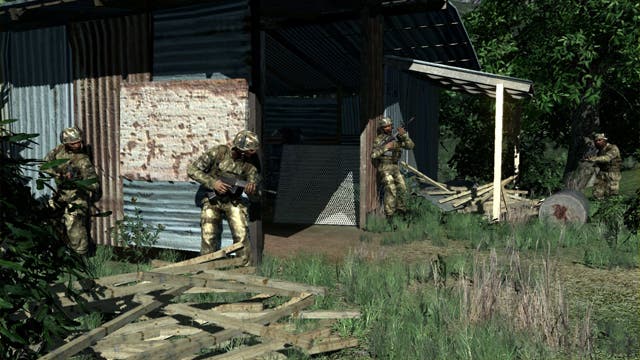
So you'll probably be grateful for the fact that your character comes equipped with the very latest in military technology circa 2019 - namely a special combat suit, which Yerli describes as being in itself "a kind of a dynamic hero."
The suit has three different modes - strength, speed and armour. "Those modes allow you to make a tangible difference, a tactical difference, at any moment," Yerli explains.
"You can increase the speed to actually dodge bullets or enemies. You can increase your strength to pick up heavy weapons, to punch harder, to actually punch trees to break them if you want... If you increase your armour, you can become a walking tank." What this boils down to in tactical terms, Yerli says, is that "you can modify your play style given the challenge you are [facing]."
For example, if you want to create a barrier between you and an enemy, you can switch strength mode on, uproot a tree and place it down as a roadblock. If you're facing a particularly nasty bunch of opponents, or perhaps just a bunch of weaklings you can't be bothered to take too long over, you can opt for the armour mode. Alternatively, speed mode lets you run away to a safe place where you can have a nice sit down and play Animal Crossing until it's all over. Possibly.
So for the most part, you'll spend the game exploring the island, fighting off hunters and getting to grips with the various options your combat suit gives you. But then, just when you're getting comfortable, Crysis will pull the rug out from under you - or rather the jungle floor. That's because the last two hours of the game take place in zero gravity, which stirs things up more than somewhat.



